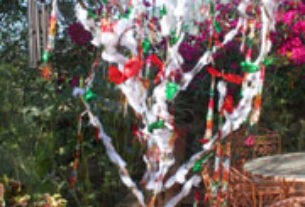There is no truth in the words
of foreigners.
Chilam Balam of Chumayel
The news arrives every day: accusations of menacing maneuvers by the Mexican army in Chiapas, proclamations and declarations from different groups and leaders, peace commissions that grow and die like wild flowers in the fields. Violence and killings. Injustice and oppression.
Articles are published. Commentaries are transmitted. Books are written. Social and political analysts, newspapermen and observers from every corner of the world look for the roots of the conflict among today’s players: the PRI, Bishop Samuel Ruiz, the professional partisans and troublemakers who appear to be the promoters and organizers of the war.
But the truth lies elsewhere.
The truth is that the Mayan war began almost 500 years ago and has never stopped.
The indians in the Yucatán peninsula who speak la maya; Tzeltals, Tzotzils and Chamulas from Chiapas; Lacandons in their jungle; Cakchikels and Quichés from Guatemala; Kekchís from Belize; Chontals, Choles, Tojolabals, Mams, Motozintlecs and Itzáes in the Petén – all of them are the descendants of the ancient Maya, whose long lost cities, civilization, Mathematics, calendar and Astronomy amaze us even today.
Yes, they are the same masked rebels that often appear in the news arriving from Chiapas.
Today, the Maya live in the same land that belonged to their ancestors, from Campeche and Yucatán to Honduras, and they keep being the same old headache to the white people who came to take their homeland in the first quarter of the 16th Century. The Maya nation today counts more than six million souls, making them the most numerous indian people in the Americas, north of Perú.
The ethnic mosaic they conform to is still full of the inextinguishable flame of their glorious past, showing live colors in spite of the centuries of harsh rule and exploitation. Impoverished and forgotten peasants of the sierra; discriminated indians in the “white” cities of Chiapas (in which they are the majority), fabrics and tapestries, brilliant embroideries, exotic cuisinies full of the products from the jungle and of the condiments guarded with zeal for many years; partisans and heroes; murderers and murdered. And yes, a Nobel prize among them.
The Mayan land has never been really at peace since the white people arrived. Just take a look to any historical timeline to see that peace for them, has been but a brief rest between war periods, revolts, insurrections and riots.
Who are these seditious Maya that have never pledged to integrate to our so called civilization?
About 1,750 years ago, ancient Maya reached what we call their Classical Period (see map). They raised buildings and constructions in the middle of the jungle that today amaze us. They fed their people with a stable system of food production, based on the cultivation of the maize (specially adverse conditions of their habitat notwithstanding), from the Yucatán to what is today known as Honduras.
With primitive instruments they devised a calendar system more precise than the Julian calendar used by the Romans, even more precise than the corrected Gregorian calendar (the Gregorian correction took place in the XVI Century, many years after the last great ceremonial center of the Maya was abandoned). Their numeric system, based on the number 20 (they surely counted using fingers and toes), which included the notion of positional value, handled concepts that no other culture, except the Hindu, managed to find.
The Maya discovered the vital concept of zero at least 300 years before the Hindu did so.
If we judge the achievements of the Maya culture, taking into account the limitations they suffered, there is no doubt that they qualify high among the advanced civilizations of the world. The environment in which they lived did not favor the development of complex technologies and cultivation systems. Accordingly, that environment was not capable of sustaining a sizable urban concentration, and that same scarce population did not encourage the development of political institutions, nor the formation of a consolidated state. Other ancient civilizations favored material accomplishments, political organization and imperial ideals, but the Maya worked much more on the intellectual and aesthetic fields.
As Betty Bell comments in her Critical Examination of the Maya Culture,
“So we might say that the cultural interests of the Maya yielded towards the intellectual achievement, at least in part because their physical and evolutive circumstances denied them the political and technological advancements that were more important to other societies.”
Their achievements in the fields of art and aesthetics; in the architecture of their cities; in the precision and complexity of their calendar; in their writing system; in their exact astronomical observations, and in their advanced Mathematics, set the Maya culture apart from any of the New World. They were not surpassed by anyone in America; equaled by few in the rest of the world.
What we call the Classical Period (see map) of the Maya culture goes from the year 250 to the 900 of our time. The great cities of the Petén, like Tikal and Uaxactún, reached then their maximum splendor, just as Copán, located in the Eastern corner of the Mayan country, in what is today Honduras. In Yucatán flourished Palenque and Bonampak, along with the cities built on what we know today as the state of Campeche, inside the zones called Río Bec and Chenes. To the north of the peninsula, Chichén Itzá, Cobá, Dzibilchaltún and other cities saw their days of glory.
Towards the end of this cultural and constructive apogee, near the year 800 A.D., the cities of the lowlands were all in decadence. But between the years 800 and 900, on a region located close to the Gulf of Mexico, in the Yucatán peninsula, the Puuc style was developed, with Uxmal, Kabah, Sayil and Labná as its best exponents.
After that, forced by causes we don’t yet clearly understand, between the years 900 and 1000 the cultural push slowed to almost a stop. Their civilization did not vanish, but it never reached the heights attained in the past. The ritual of erecting stone estelas to commemorate significant dates, with the so called “long count” of the days, fell into disuse. The ceremonial centers were abandoned, and the creators went away.
The center of power moved to the north of the Yucatecan peninsula, and Chichén Itzá dominated the scene for some years, to later pass the sceptre to Mayapán. Maya history becomes much more political than cultural at this time, a novelty that was already common in almost every other part of the world.
And then they arrived, the whites from the East.


